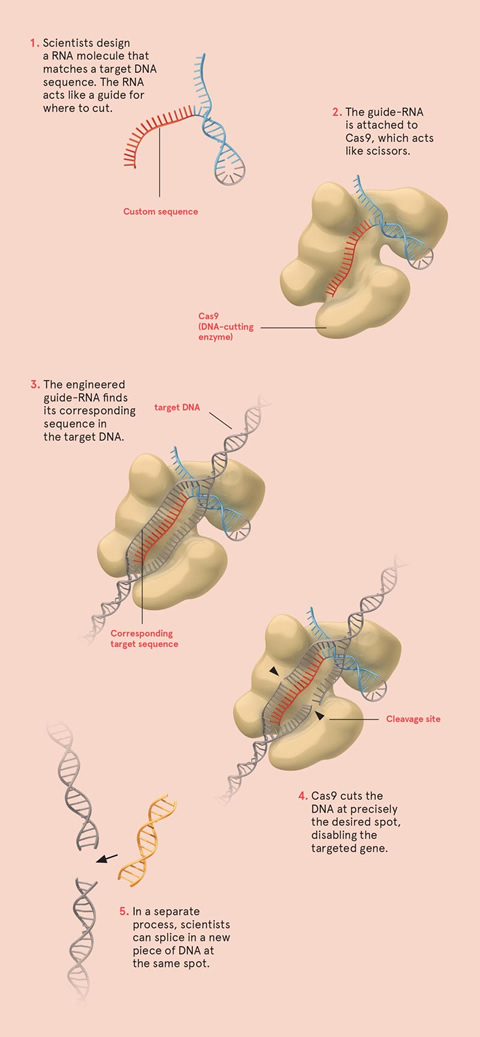CRISPR wasn’t so much invented as discovered.
In the late 1980s, Japanese scientists studying E. coli gut bacteria found odd, repeating sequences of DNA whose presence puzzled them. Later, European microbiologists found the same sequences in other types of bacteria and dubbed these patterns “clustered regularly interspaced short palindromic repeats,” or CRISPR for short. Still, no one understood the sequences’ purpose.
In the early 2000s, scientists recognized that CRISPR is a natural, age-old defence mechanism against, of all things, viruses. Like people, bacteria can become infected by viruses. Once a bacterium recognizes the presence of an invading virus, its CRISPR defence system goes into action.
The bacterium copies the virus’s DNA into a molecule of RNA, DNA’s messenger. This guide-RNA now has a sequence that matches that of the invading virus. Stationed nearby is a collection of CRISPR-associated proteins – the best-known is called Cas9 – that act like microscopic scissors, capable of cutting DNA. The guide-RNA is like the “hand” that directs the scissors to exactly where to cut. Together, they succeed in cutting up the virus’s DNA. The virus dies, and the bacterium survives.
In 2012, three researchers – biochemist Jennifer Doudna at University of California, Berkeley, microbiologist Emmanuelle Charpentier, now at Berlin’s Max Planck Institute for Infection Biology, and bioengineer Feng Zhang at the Massachusetts Institute of Technology – showed that you could harness the power of CRISPR/Cas9 to use deliberately as a gene-editing tool. Today, scientists can use CRISPR/Cas9 to target the DNA of any living organism, not only to disable a gene but also to alter or splice in a new piece of DNA. To accomplish this, scientists use software to design the target sequence, and can make or purchase the matching guide-RNA and Cas9.
Recent Posts
U of T’s Feminist Sports Club Is Here to Bend the Rules
The group invites non-athletes to try their hand at games like dodgeball and basketball in a fun – and distinctly supportive – atmosphere
From Mental Health Studies to Michelin Guide
U of T Scarborough alum Ambica Jain’s unexpected path to restaurant success
A Blueprint for Global Prosperity
Researchers across U of T are banding together to help the United Nations meet its 17 sustainable development goals






